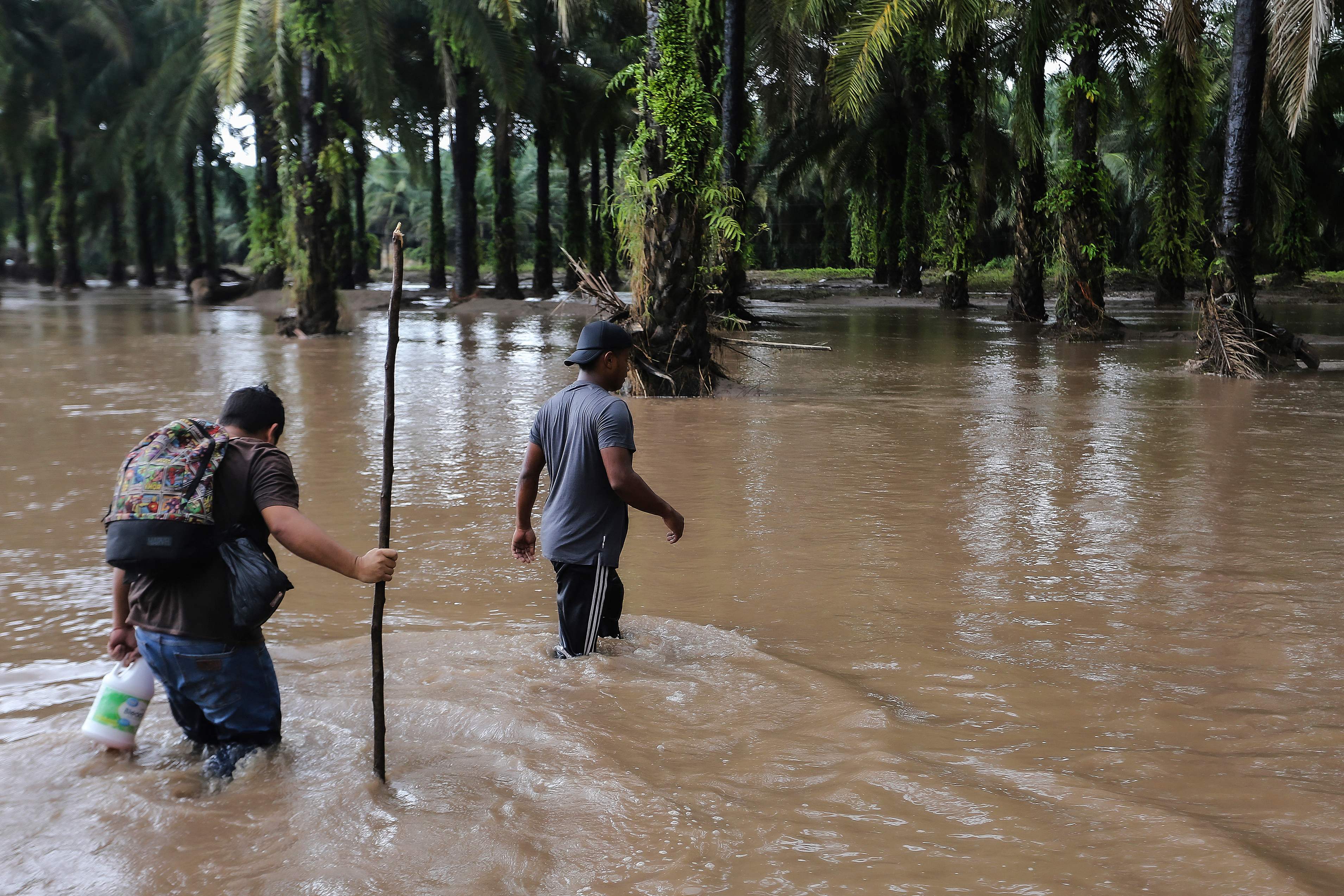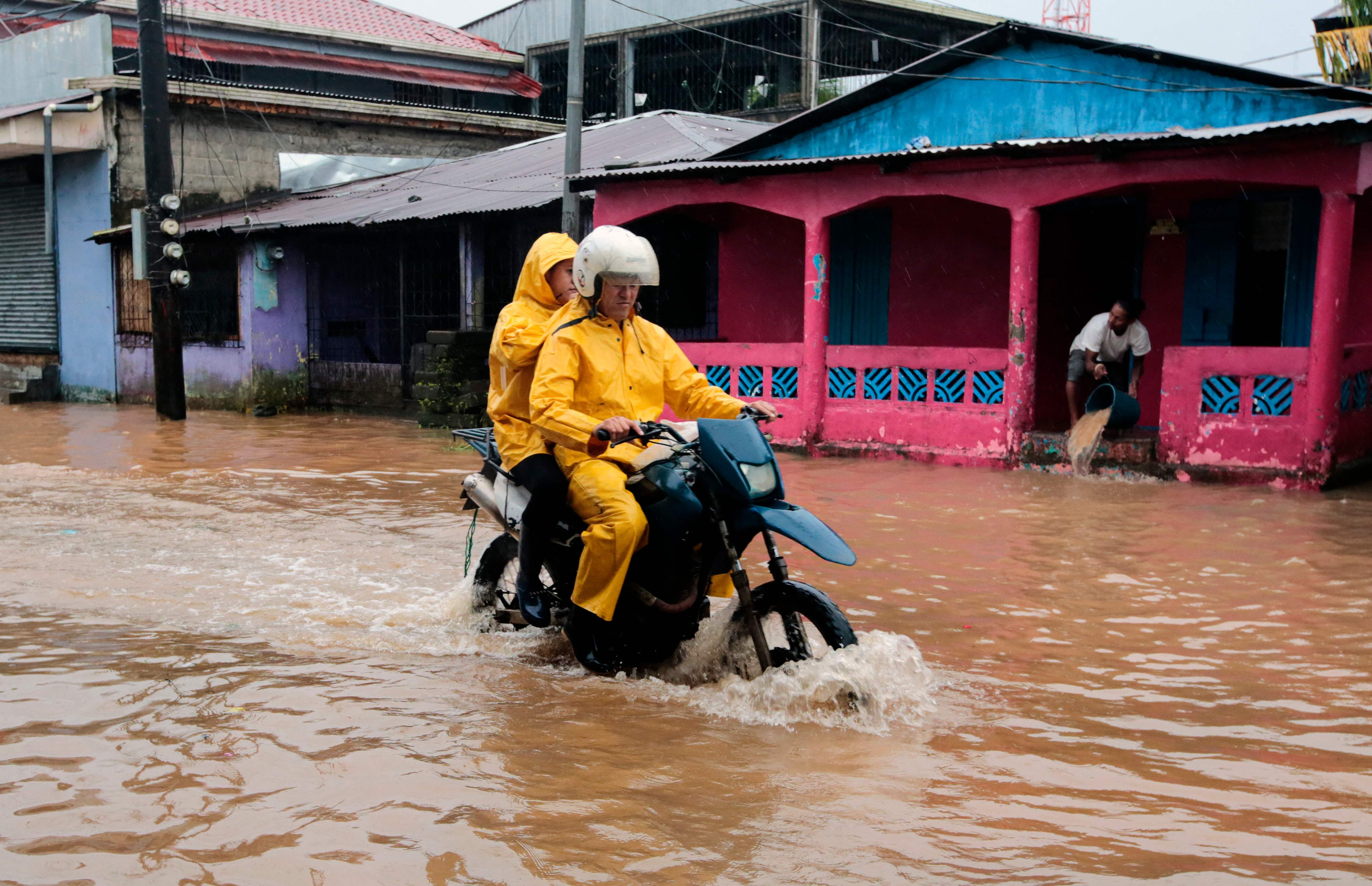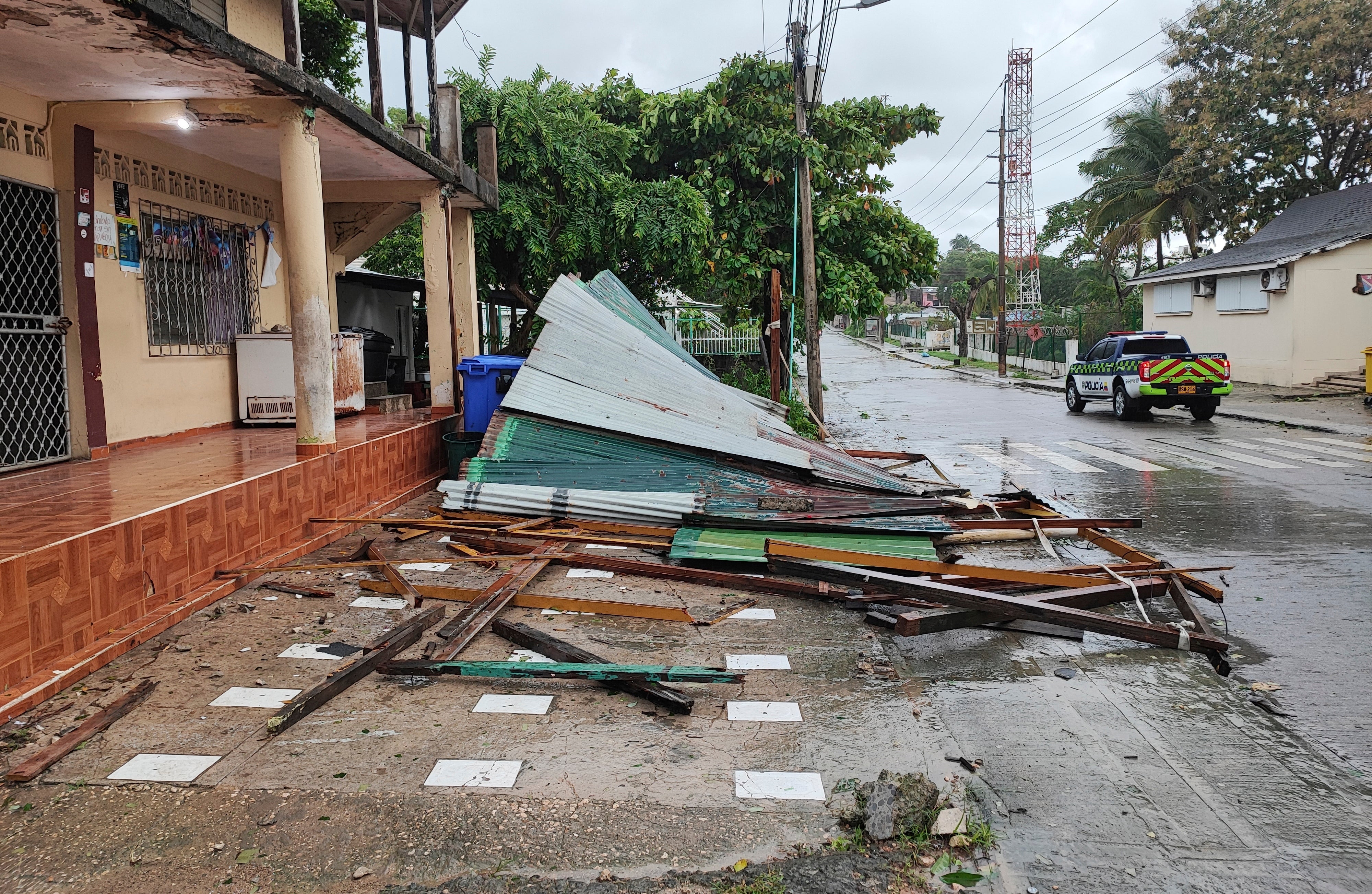Hurricane Julia smashes into Nicaragua, bringing floods and damage as it moves over Central America
Nicaragua reported power outages and nearly 10,000 people evacuated to shelters as the storm hit
Your support helps us to tell the story
From reproductive rights to climate change to Big Tech, The Independent is on the ground when the story is developing. Whether it's investigating the financials of Elon Musk's pro-Trump PAC or producing our latest documentary, 'The A Word', which shines a light on the American women fighting for reproductive rights, we know how important it is to parse out the facts from the messaging.
At such a critical moment in US history, we need reporters on the ground. Your donation allows us to keep sending journalists to speak to both sides of the story.
The Independent is trusted by Americans across the entire political spectrum. And unlike many other quality news outlets, we choose not to lock Americans out of our reporting and analysis with paywalls. We believe quality journalism should be available to everyone, paid for by those who can afford it.
Your support makes all the difference.Hurricane Julia made landfall in Nicaragua over the weekend as strong winds, heavy rain and local flooding hit the country, shutting off power in areas as some residents pre-emptively evacuated to shelters.
The storm system is now moving out into the Pacific Ocean but will still bring severe weather to parts of El Salvador, Guatemala, Honduras and southern Mexico early this week.
“This rainfall may cause life-threatening flash floods and mudslides across Central America today,” warned the National Hurricane Center (NHC).
By Saturday night, Julia had strengthened into a Category 1 hurricane as it passed over San Andres, Providencia and Santa Catalina Island, all islands of Colombia in the southwest Caribbean.
The storm made landfall in Nicaragua before dawn on Sunday morning with wind speeds of about 85 miles per hour (140 kilometres per hour).
Nicaraguan Vice President Rosario Murillo said that parts of the country had lost power and nearly 10,000 people had been evacuated to shelters, according to the Associated Press. On San Andres, Colombian officials reported downed trees and roofs ripped off the tops of some houses, they add.
There were no reports of any deaths in Colombia or Nicaragua, AP reported. Colombian President Gustavo Petro said on Twitter that two people had been injured, two homes destroyed and 101 homes damaged on San Andres.
Photos from countries across Central America show local damage like flooded streets, fallen trees and damaged homes. In addition to Nicaragua, the storm’s impact spread to the neighbouring countries of Honduras and Costa Rica.
By midday on Sunday, Julia had been downgraded to a tropical storm as it weakened over land. The storm was downgraded again by Monday into a tropical depression as it heads over El Salvador and Guatemala and is expected to dissipate by later in the evening.

On Monday, some areas in those two countries could expect between five to 10 inches (13 – 25 centimetres) of rain, with isolated locations receiving up to 15 in (38 cm) of rain, NHC cautioned.
Western Honduras and the Isthmus of Tehuantepec in Mexico could expect up to 10 in (25 cm) of rain today and tomorrow, and flash flooding is possible across the isthmus through Tuesday, NHC said.
Parts of Nicaragua will have gotten up to 15 in (38 cm) of rain by the time the weather completely clears.
Julia was the fifth hurricane and tenth named storm of what has become an active hurricane season in the Atlantic Ocean.

While summertime was uncharacteristically quiet when it came to tropical storm systems, September and October have been very busy as massively destructive storms like Hurricane Fiona and Hurricane Ian made landfall.
Hurricane Ian, which made landfall in Florida late last month as a near-Category 5 storm, was especially deadly, leaving at least 120 people dead in Florida — the deadliest hurricane in the state for nearly a century.
The US National Oceanic and Atmospheric Administration (NOAA) had forecast an “above-normal” season for hurricane activity this year, with 14-20 named storms and up to 10 hurricanes, including three to six hurricanes at Category 3 or stronger.

Hurricane season starts in June and lasts through November, usually peaking in mid-September.
While hurricanes may not be getting more frequent, climate scientists do expect them to become much stronger as the climate crisis grows.
Warmer ocean surface temperatures can quickly power up a storm into a massive and dangerous cyclone, much like what happened with Hurricane Ian as it moved over the very warm waters of the Caribbean and Gulf of Mexico.
A United Nations climate science panel has found that the percentage of storms reaching Category 3 or higher has been increasing over the past four decades.




Join our commenting forum
Join thought-provoking conversations, follow other Independent readers and see their replies
Comments